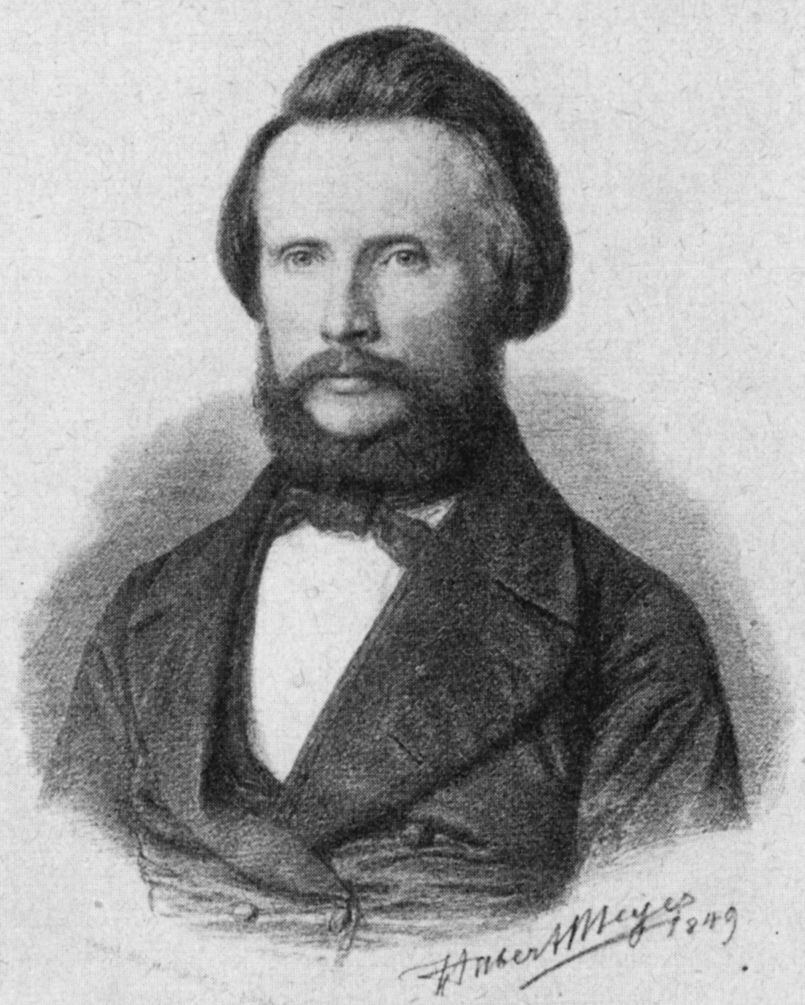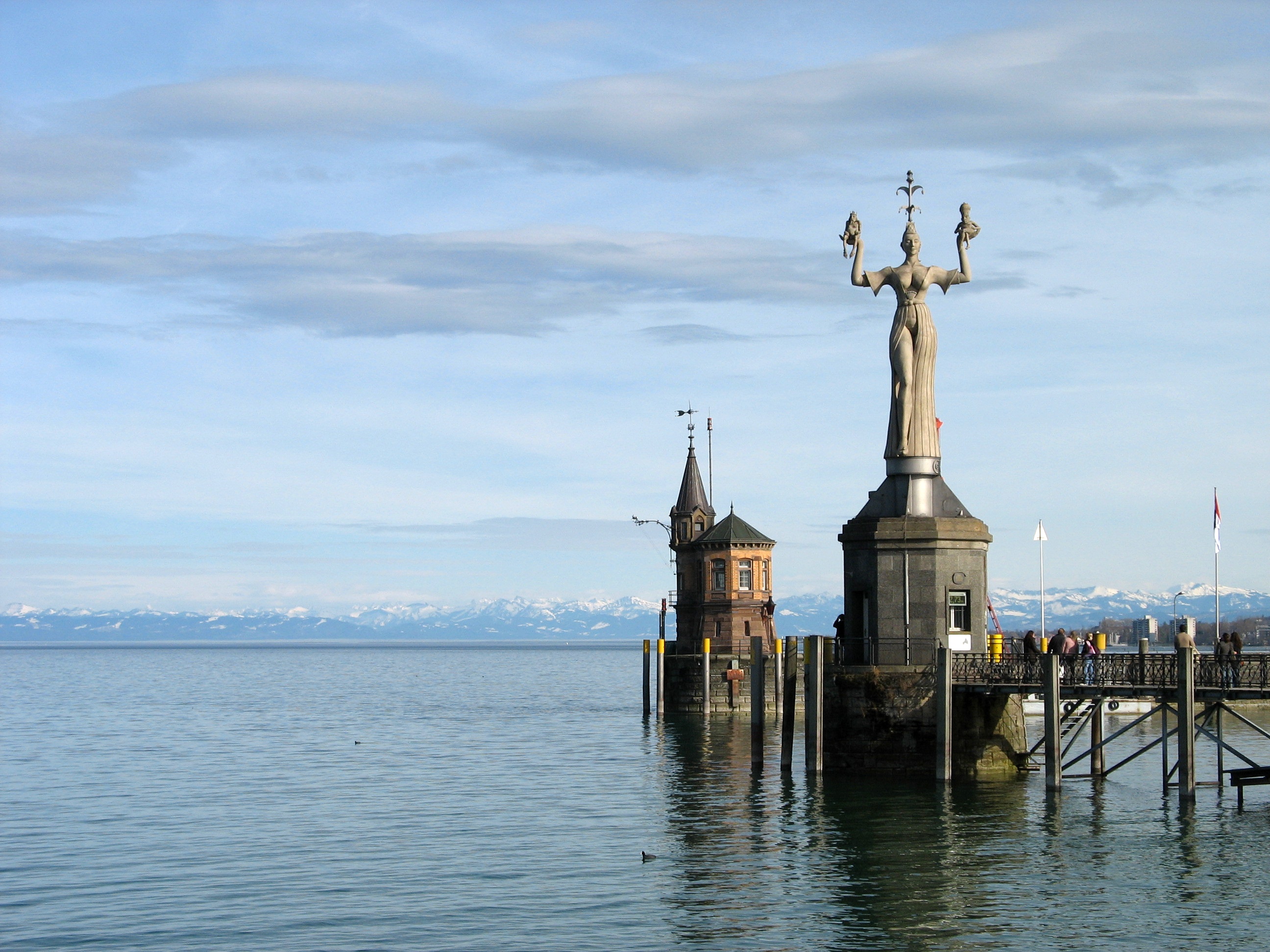|
Offenburg Hauptbahnhof
Offenburg station (german: Bahnhof Offenburg) is a railway station in Baden-Württemberg and has seven tracks on four platforms. Offenburg used to be a railway town and the station was of major economic importance to it. In recent years the maintenance facilities and much of the rail freight yards have been closed. The station is very centrally located within the city and is easily accessible by 18 different bus routes from the central bus station, 50 metres from the railway station. Rail services InterCityExpress services operate through the station every two hours between Berlin, Frankfurt and Basel and less frequently between Cologne, Frankfurt Airport and Basel. InterCity trains operate from a variety of destinations in Germany and Switzerland. Regional-Express trains operate to and from Karlsruhe, Basel Bad and Konstanz. Regional rail services are operated as the Ortenau-S-Bahn, by Südwestdeutsche Verkehrs-Aktiengesellschaft, a company owned by Baden-Württemb ... [...More Info...] [...Related Items...] OR: [Wikipedia] [Google] [Baidu] |
Offenburg
Offenburg ("open borough" - coat of arms showing open gates; Low Alemannic German, Low Alemmanic: ''Offäburg'') is a city located in the state of Baden-Württemberg, Germany. With nearly 60,000 inhabitants (2019), it is the largest city and the administrative capital of the Ortenaukreis. History In recent times the remains of Roman settlements have been found within the city's territory. Offenburg was first mentioned in historical documents dating back to 1148. Offenburg had already been declared a Free Imperial City by 1240. In September 1689, the city - with the exception of two buildings - was totally destroyed by the French during the Nine Years War. Due to Napoleon's dissolution of the Holy Roman Empire in 1803 and subsequent reorganization of the German states, Offenburg lost its status as a Free Imperial City and fell under the rule of the Grand Duchy of Baden. During the outbreak of the Revolutions of 1848 in the German states#Baden, Revolutions of 1848, the "''Offenbur ... [...More Info...] [...Related Items...] OR: [Wikipedia] [Google] [Baidu] |
Intercity (Deutsche Bahn)
Intercity is the second-highest train classification in Germany, after the ICE. Intercity services are loco-hauled express train services, usually over long-distances. There are Intercity routes throughout Germany, and routes generally operate with a two-hour frequency, with multiple routes giving a more frequent service on core routes. Intercity services are operated by the DB Fernverkehr sector of Deutsche Bahn. The ''Intercity'' name was introduced in Germany in 1971, replacing the old F-Zug category, and was the top category of train in Germany until the introduction of the ICEs in the early 1990s. With the proliferation of ICE services, the role of IC trains has diminished slightly, and they have taken on the character of many former InterRegio trains. Nonetheless, Intercity trains still offer a very high standard of speed and comfort – all services convey first class accommodation, and most include catering – usually a Bistro Cafe, but some services include a restaur ... [...More Info...] [...Related Items...] OR: [Wikipedia] [Google] [Baidu] |
Baden Mainline
The Baden main line (german: Badische Hauptbahn) is a German railway line that was built between 1840 and 1863. It runs through Baden, from Mannheim via Heidelberg, Karlsruhe, Offenburg, Freiburg, Basle, Waldshut, Schaffhausen and Singen to Constance (''Konstanz''). The Baden Mainline is 412.7 kilometres long, making it the longest route in the Deutsche Bahn network and also the oldest in southwest Germany. The section between Mannheim and Basle is the most important northern approach to the Swiss Alpine passes, whilst the section between Basle and Constance is only of regional significance. The stretch from Karlsruhe to Basle is also known as the Rhine Valley Railway (''Rheintalbahn'') and the Basle–Constance section as the High Rhine Railway (''Hochrheinstrecke''). History The Upper Rhine Valley has been an important trade route from Central Europe to Switzerland and Italy since Roman times. With the development of railways in the early 1830s, considerations arose of building ... [...More Info...] [...Related Items...] OR: [Wikipedia] [Google] [Baidu] |
Appenweier
Appenweier ( gsw, label= Low Alemannic, Appewiir) is a municipality in western Baden-Württemberg, Germany in the district of Ortenau. Geography Appenweier consists of the main municipal Appenweier (4,075 inhabitants), Urloffen (4,301 inhabitants), known for horseradish Horseradish (''Armoracia rusticana'', syn. ''Cochlearia armoracia'') is a perennial plant of the family Brassicaceae (which also includes mustard, wasabi, broccoli, cabbage, and radish). It is a root vegetable, cultivated and used worldwide ...-growing, and Nesselried (1,383 inhabitants). The Nesselried district runs through the Wannenbach valley, while Urloffen lies north of Appenweier. References External links Appenweier Web Page (in German)Appenweier history, places of interest, destination (in German) Ortenaukreis {{Ortenaukreis-geo-stub ... [...More Info...] [...Related Items...] OR: [Wikipedia] [Google] [Baidu] |
Occupation Of The Ruhr
The Occupation of the Ruhr (german: link=no, Ruhrbesetzung) was a period of military occupation of the Ruhr region of Germany by France and Belgium between 11 January 1923 and 25 August 1925. France and Belgium occupied the heavily industrialized Ruhr Valley in response to Germany defaulting on reparation payments dictated by the victorious powers after World War I in the Treaty of Versailles. Occupation of the Ruhr worsened the economic crisis in Germany, and German civilians engaged in acts of passive resistance and civil disobedience, during which 130 were killed. France and Belgium, facing economic and international pressure, accepted the Dawes Plan to restructure Germany's payment of war reparations in 1924 and withdrew their troops from the Ruhr by August 1925. The Occupation of the Ruhr contributed to German rearmament and the growth of radical right-wing and left-wing movements in Germany. Background The Ruhr region had been occupied by Allied troops in the ... [...More Info...] [...Related Items...] OR: [Wikipedia] [Google] [Baidu] |
World War I
World War I (28 July 1914 11 November 1918), often abbreviated as WWI, was one of the deadliest global conflicts in history. Belligerents included much of Europe, the Russian Empire, the United States, and the Ottoman Empire, with fighting occurring throughout Europe, the Middle East, Africa, the Pacific, and parts of Asia. An estimated 9 million soldiers were killed in combat, plus another 23 million wounded, while 5 million civilians died as a result of military action, hunger, and disease. Millions more died in genocides within the Ottoman Empire and in the 1918 influenza pandemic, which was exacerbated by the movement of combatants during the war. Prior to 1914, the European great powers were divided between the Triple Entente (comprising France, Russia, and Britain) and the Triple Alliance (containing Germany, Austria-Hungary, and Italy). Tensions in the Balkans came to a head on 28 June 1914, following the assassination of Archduke Franz Ferdin ... [...More Info...] [...Related Items...] OR: [Wikipedia] [Google] [Baidu] |
Friedrich Eisenlohr
Jakob Friedrich Eisenlohr (23 November 1805, Lörrach - 27 February 1854, Karlsruhe) was a German architect and university professor. His design for a cuckoo clock, now known as the Cuckoo clock#Bahnhäusle style, a successful design from Furtwangen, Bahnhäusle (train station) style, was the first to be mass-produced and helped make the clocks popular outside of Germany. Life and work His father, Jakob Friedrich Eisenlohr (1777–1854), was an evangelical pastor. From 1821 to 1824, he studied in Freiburg im Breisgau with the architect, .Peter Pretsch: "Friedrich Eisenlohr. Architekt der badischen Eisenbahn", In: ''Blick in die Geschichte'', Nr. 67, 24 June 2005Online After that, he moved to Karlsruhe, where he studied at the building school operated by Friedrich Weinbrenner. From 1826 to 1828, he continued his studies in Italy. After serving an apprenticeship, he became a teacher at the Polytechnischen Oberschule in Karlsruhe where, in 1839, he became a building official, and ... [...More Info...] [...Related Items...] OR: [Wikipedia] [Google] [Baidu] |
Ortenau-S-Bahn
Ortenau-S-Bahn (''OSB'') is a brand name of the Südwestdeutsche Verkehrs-Aktiengesellschaft (SWEG), a transport company owned by the state of Baden-Württemberg. It is employed for regional railway services in the Ortenau area, centering on . Between 1998 and 2014, these were operated by Ortenau-S-Bahn GmbH, a wholly-owed subsidiary of SWEG. Services the Ortenau-S-Bahn branding encompasses the following services, although unlike most German S-Bahn systems they are not designated with an 'S' and the white/green S-Bahn logo: * – ( Acher Valley Railway) * –– ( Rench Valley Railway) * Offenburg–Appenweier–– ( Appenweier–Strasbourg railway) * Offenburg–– ( Black Forest Railway) * Offenburg–Hausach–– ( Kinzig Valley Railway) * – ( Harmersbach Valley Railway) References External links * Official web site of the Ortenau S-Bahn Freudenstadt (district) Ortenaukreis Railway companies of Germany Rottweil (district) Ortenau Rapid transit in Ge ... [...More Info...] [...Related Items...] OR: [Wikipedia] [Google] [Baidu] |
Konstanz
Konstanz (, , locally: ; also written as Constance in English) is a university city with approximately 83,000 inhabitants located at the western end of Lake Constance in the south of Germany. The city houses the University of Konstanz and was the residence of the Roman Catholic Diocese of Konstanz for more than 1,200 years. Location The city is located in the state of Baden-Württemberg and situated at the banks of Lake Constance (''Bodensee'' in German). The river Rhine, which starts in the Swiss Alps, passes through Lake Constance and leaves it, considerably larger, by flowing under a bridge connecting the two parts of the city. North of the river lies the larger part of the city with residential areas, industrial estates, and the University of Konstanz; while south of the river is the old town, which houses the administrative centre and shopping facilities in addition to the ''Hochschule'' or the ''University of Applied Sciences''. Car ferries provide access across Lake Con ... [...More Info...] [...Related Items...] OR: [Wikipedia] [Google] [Baidu] |
Basel Badischer Bahnhof
Basel Badischer Bahnhof (literally "Basel Baden Railway station", the name referring to the Grand Duchy of Baden State Railways, which built the station) is a railway station situated in the Swiss city of Basel. The station is situated on Swiss soil, but is operated by the German railway company Deutsche Bahn. A customs border is situated in the passenger tunnel between the tracks and the station hall. It is listed as a Swiss heritage site of national significance. The station is served by three lines of the tri-national Regio S-Bahn Basel, and ICE and EC/IC lines to and from Freiburg, Karlsruhe, Mannheim, Frankfurt, Hamburg, Berlin and other cities in Germany. The station is the smaller of the two largest railway stations in Basel, the other being Basel SBB, which is operated by the Swiss Federal Railways (SBB CFF FFS). History In March 1838, the Grand Duchy of Baden State Railways started working on a railway line from Mannheim via Heidelberg, Karlsruhe and Frei ... [...More Info...] [...Related Items...] OR: [Wikipedia] [Google] [Baidu] |
.jpg)




